This article was medically reviewed by Troy A. Miles, MD. Dr. Miles is an Orthopedic Surgeon specializing in Adult Joint Reconstruction in California. He received his MD from the Albert Einstein College of Medicine in 2010, followed by a residency at the Oregon Health & Science University and fellowship at the University of California, Davis. He is a Diplomat of the American Board of Orthopaedic Surgery and is a member of the American Association of Hip and Knee Surgeons, American Orthopaedic Association, American Association of Orthopaedic Surgery, and the North Pacific Orthopaedic Society.
There are 12 references cited in this article, which can be found at the bottom of the page.
This article has been viewed 101,024 times.
Studies show that dislocated kneecaps, also called patellar dislocation, are a common injury that usually happen during sports or episodes of heavy physical activity.[1] Dislocation happens when the kneecap, or patella, slides out of place. This can cause discomfort, pain, and swelling. Experts note that in order to properly deal with a dislocated knee, you should get medical attention as soon as possible and give your leg proper time and treatment to fully heal.[2]
Steps
Getting Treatment
-
1Evaluate the situation. Depending on how badly dislocated your knee is or if you are in significant pain, you may need to call emergency services or get to a local hospital. Evaluating the status of your knee before deciding on the right treatment can prevent further injury and minimize discomfort.
- You may have a dislocated knee if your knee appears deformed or different than it normally does.[3]
- Other signs your knee may be dislocated are: you cannot straighten out a bent knee, your kneecap dislocates to the outside of your knee, you have pain and tenderness in the area, there is swelling around your knee, you can move your kneecap far to each side of your knee.[4]
- You may also have trouble walking.[5]
-
2Straighten your knee if possible. If you are able and it is not too painful, try and straighten out your knee. If your knee is stuck or too painful to straighten out, stabilize it and get medical attention as soon as possible.[6]Advertisement
-
3Avoid moving the joint. If your knee is deformed or painful, avoid moving the joint. You also shouldn’t force it into place. This may cause further injury to your surrounding muscles, ligaments, nerves or blood vessels.
-
4Splint your knee. It is very important to stabilize your knee to prevent further damage. Place a splint behind and around your knee until you can get medical attention.[7]
- Make a splint using a variety of items including rolled up newspaper or towels. Apply surgical tape around your leg to keep the splints in place.
- Having padding on your splint may minimize pain.
-
5Apply ice to your knee. Place an ice pack on your knee after you splint it. This can minimize pain and swelling by controlling internal bleeding and the pooling of fluids around the injured joint.[8]
- Avoid applying the ice directly to the joint to prevent frostbite. Wrap your knee or the joint in some kind of cloth or towel to reduce your risk of frostbite.
-
6Visit a doctor. Your doctor or local hospital can decide on the best treatment for your knee, which will likely include realigning your joint. Depending on the severity of the dislocation, you may need a splint, cast, surgery, or rehabilitation.[9]
- Your doctor may ask questions about how the dislocation happened, how painful the injury is, and if you’ve had a dislocated knee in the past.
- You may need an x-ray or MRI to help determine the severity of your dislocation and the best course of treatment.[10]
-
7Receive treatment. Once your doctor examines you, she may suggest several different types of treatment. You may undergo:[11]
- Reduction, which requires that your doctor gently maneuver your knee back into place. If you are in a lot of pain, she may give you a local or general anesthetic.
- Immobilization, which requires a splint or sling to keep your knee from moving around too much. How long you wear the splint depends on how much damage the dislocation caused.
- Surgery, which may be necessary if your doctor can’t realign your knee, the surrounding tissue is damaged, or you have frequent dislocations.
- Rehabilitation, which can help you regain motor strength after your splint is removed.[12]
Caring for Your Knee
-
1Rest your leg. Give your leg a chance to rest every day. Immobility can help you heal properly and minimize pain or discomfort.[13]
- Wiggle your toes and lower leg if it doesn’t cause too much pain to prevent stiff joints.
-
2Apply ice to your knee. Apply an ice pack to your leg throughout the day for the first two to three days. The ice can reduce inflammation and pain and promote healing.[14]
- Use ice as often as necessary for 15–20 minutes at a time.
- Wrap the ice pack in a towel to protect your skin from the cold.
- If the ice is too cold or your skin numbs, take it off.
-
3Place heat on your knee. After two to three days, place heat on your knee. This helps relax tightened muscles and ligaments and helps your knee heal.[15]
- Apply heat for 20 minutes at a time.
- Remove heat if it gets too hot or hurts. You should have a towel or cloth as a barrier between your skin and the heat source.
- Use heating blankets or patches to heat your knee.
-
4Manage pain with medication. You may have pain and discomfort with your dislocation. Take a pain reliever to reduce discomfort and help you relax.[16]
- Take over-the-counter medications such as aspirin, ibuprofen, naproxen sodium, or acetaminophen. Ibuprofen and naproxen sodium can reduce inflammation.
- If you are in a lot of pain, ask your doctor to prescribe a pain reliever with a narcotic.
-
5Move your leg gently. Giving your leg and knee a chance to rest can help the healing process. Avoid excessive movement and favor doing gentle movements to get blood flowing and prevent stiff joints.
- Start by wiggling your toes and moving your leg gently back and forth and then side to side.
- Stretch your quads by lying on your stomach and bending your leg back to grasp your ankle. Gently pull your heel toward your butt. Hold this position as long as you can and gradually increase your time.
- Stretch your hamstrings by lying on your back with a belt or towel looped over the ball of your foot. Straighten your leg and slowly pull the belt to raise your leg while keeping the opposite leg on the floor. Keep raising your leg until you feel a gentle stretch. Hold it for as long as you can and gradually increase your time.
- Ask your doctor if there are any movements or light exercises you can do to promote healing and avoid stiffness.
-
6Undergo rehabilitation. Your doctor may suggest rehabilitation or physical therapy once your sling or splint is removed.[17] Attend rehabilitation sessions until you receive the OK from your physical therapist.
- Attend rehabilitation under the direction of your doctor or another medical professional. Ask your doctor to suggest a physical therapist.
- Early rehabilitation could include simple movements that help promote blood flow and prevent stiffness in your knee.
- Physical therapy may help you regain muscle strength, joint motion, and flexibility.[18]
Adapting Your Lifestyle
-
1Return to normal activities after a few weeks. Wait a few weeks to return to your normal activities. You may also want to wait until your doctor approves returning your usual routine.[19]
- Depending on the severity of your dislocation and the treatment, you may be on crutches or in a wheelchair. Ask your doctor if you are able to drive or even sit for prolonged periods.
- Modify your eating and sleeping patterns to accommodate your treatment. For example, if you’re in a wheelchair, it may be easier for you to rearrange the lower floor of your home so that you don’t have to climb up your stairs. You may also want to order take-out so that you don’t have to stand and prepare foods.
-
2Strengthen your knee with diet. Eating foods high in calcium and vitamin D may help strengthen your kneecap and other bones. This could help heal your injury and prevent future dislocations.[20]
- Calcium and Vitamin D often work together to strengthen bones.
- Good sources of calcium include milk, spinach, soybeans, kale, cheese, and yogurt.
- Try taking calcium supplements if don’t get enough calcium in your diet. Aim to get as much calcium as you can from whole foods.
- Good sources of vitamin D are salmon, tuna, beef liver, and egg yolks.[21]
- Take Vitamin D supplements if you can’t get all of your Vitamin D through food.
- Consider eating foods fortified with calcium or Vitamin D.[22]
-
3Wear sensible clothing. Wearing clothing, especially pants, with dislocated knee can be uncomfortable and challenging. Choose clothing that will be easy to put on and take off and won’t make you uncomfortable.
- Wear loose pants or shorts. You can also opt to not wear pants around the house.
- Split pants or shorts down the seam and sew in Velcro to make them easier to take on and off.
-
4Ask for help. You may find certain activities challenging. Asking friends or family members to help you while you’re recovering may make your life easier and more comfortable.
- Ask someone to carry your things when you’re going places so that you don’t put too much weight on your joint. If you need to be off your feet, see if someone would be willing to help prepare your meals.
- Strangers are often more likely to help you while you’re injured. From helping you with groceries to holding doors open, take the chance to rest in these cases.
- Avoid any challenging activities. Certain activities, such as driving, may present more of a challenge with a dislocated knee. In these cases, look for alternatives such as asking your friends or family members to give you a ride, or you could take public transportation.
Warnings
- Don't overdo it, which may cause further injury and discomfort.⧼thumbs_response⧽
References
- ↑ https://medlineplus.gov/ency/article/001070.htm
- ↑ https://www.pennmedicine.org/for-patients-and-visitors/patient-information/conditions-treated-a-to-z/kneecap-dislocation
- ↑ https://www.nlm.nih.gov/medlineplus/ency/article/001070.htm
- ↑ https://www.nlm.nih.gov/medlineplus/ency/article/001070.htm
- ↑ https://www.nlm.nih.gov/medlineplus/ency/article/001070.htm
- ↑ https://my.clevelandclinic.org/health/diseases/21633-patellar-dislocations
- ↑ https://my.clevelandclinic.org/health/diseases/21633-patellar-dislocations
- ↑ https://ruh.nhs.uk/patients/services/physiotherapy/documents/PHY035_Patella_dislocation.pdf
- ↑ https://www.pennmedicine.org/for-patients-and-visitors/patient-information/conditions-treated-a-to-z/kneecap-dislocation
- ↑ https://medlineplus.gov/ency/patientinstructions/000585.htm
- ↑ https://www.nhs.uk/conditions/dislocated-kneecap/
- ↑ https://my.clevelandclinic.org/health/diseases/21633-patellar-dislocations
- ↑ https://ruh.nhs.uk/patients/services/physiotherapy/documents/PHY035_Patella_dislocation.pdf
- ↑ https://myhealth.alberta.ca/Health/aftercareinformation/pages/conditions.aspx?hwid=ut2011
- ↑ https://www.hopkinsmedicine.org/health/treatment-tests-and-therapies/ice-packs-vs-warm-compresses-for-pain
- ↑ https://www.nhs.uk/conditions/dislocated-kneecap/
- ↑ https://www.nhsfife.org/media/35363/patella-dislocation-english.pdf
- ↑ https://www.nhsfife.org/media/35363/patella-dislocation-english.pdf
- ↑ https://medlineplus.gov/ency/patientinstructions/000585.htm
- ↑ https://medlineplus.gov/ency/patientinstructions/000490.htm
- ↑ https://ods.od.nih.gov/factsheets/VitaminD-HealthProfessional/
- ↑ https://ods.od.nih.gov/factsheets/VitaminD-HealthProfessional/
About This Article
When you dislocate your kneecap, the patella slides out of place, which can cause pain and tenderness, swelling, or an inability to straighten your bent leg. Call your doctor or seek treatment as soon as possible since you’ll need your knee maneuvered back in place and you may require immobilization or surgery. In the meantime, stabilize your knee by placing a rolled-up towel behind it and securing it with surgical tape. To ease the pain and swelling, place an ice pack on your knee after you splint it. After you seek treatment, control the pain and inflammation by icing your knee several times a day for 20 minutes at a time. By the third day, switch to heat to relax tense muscles. For more tips from our Medical co-author, including how to care for your knee while it’s healing, keep reading!
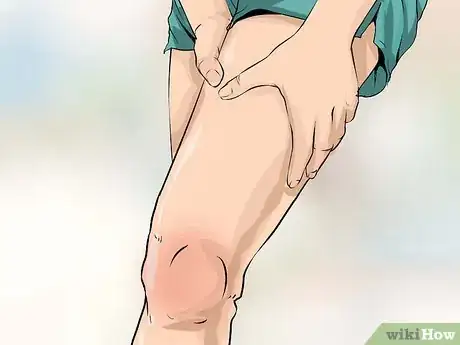

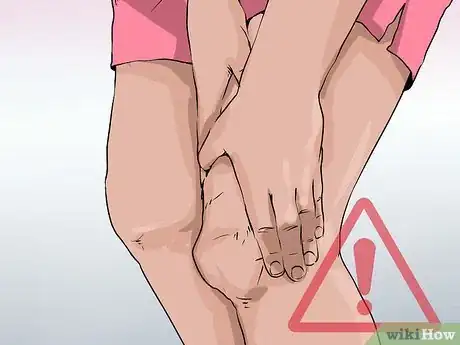
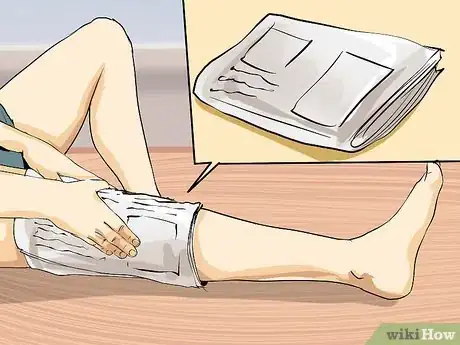
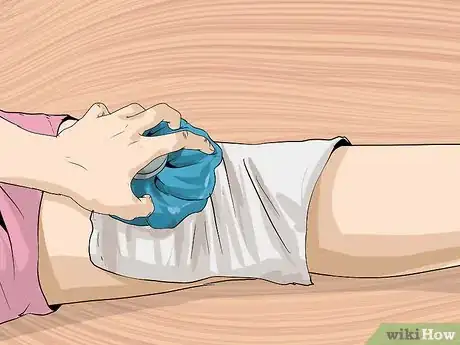
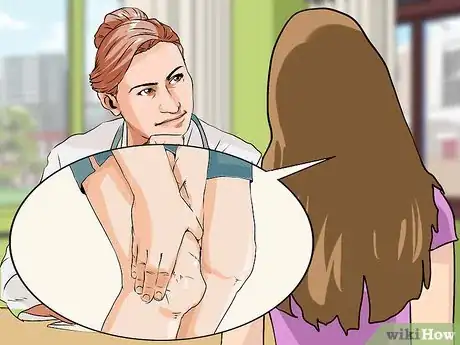
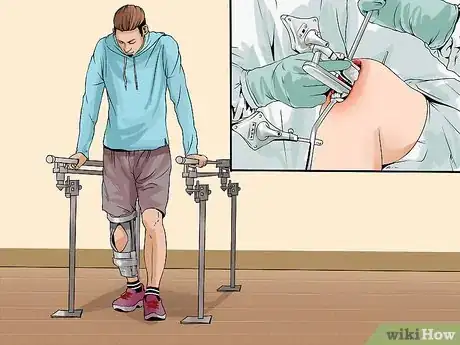

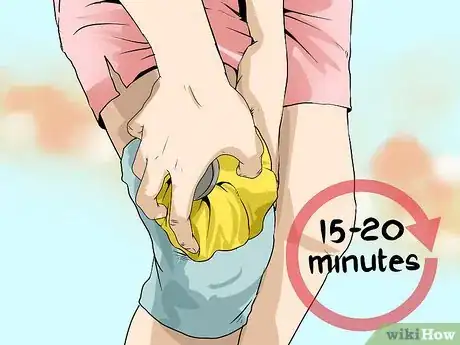
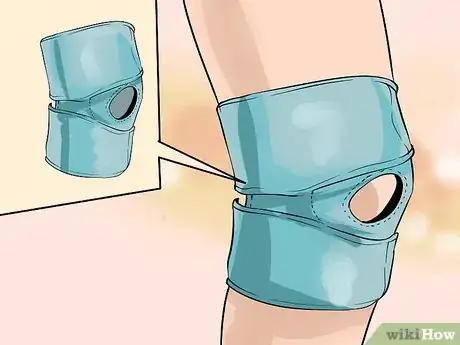

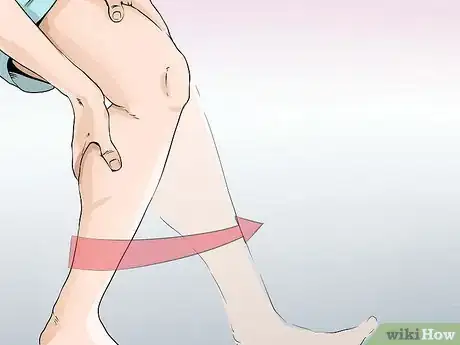
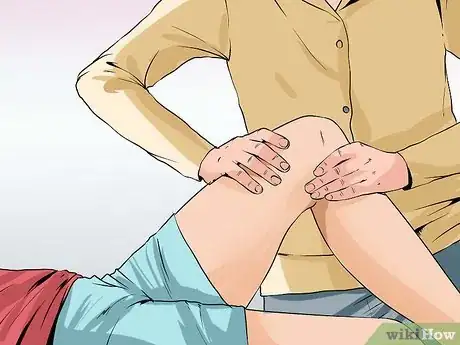
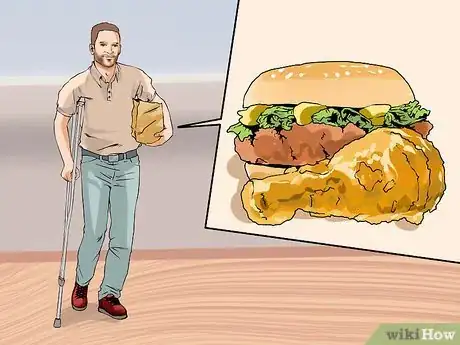
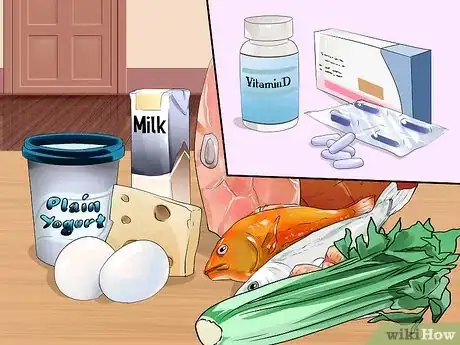
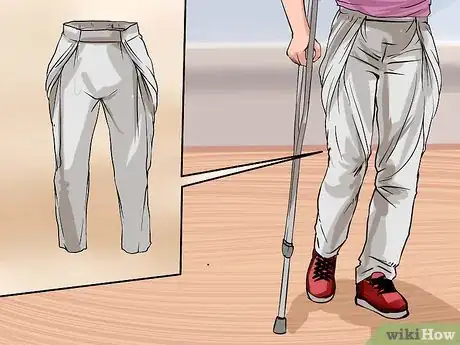
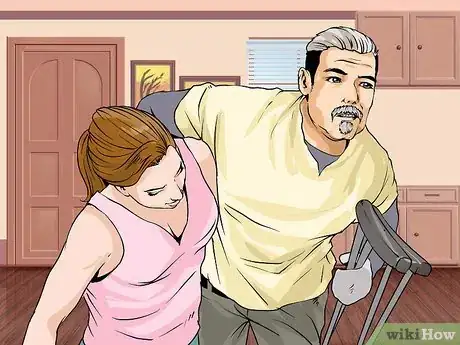
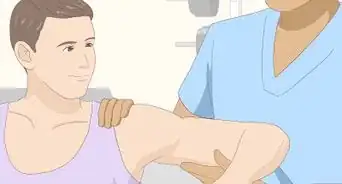
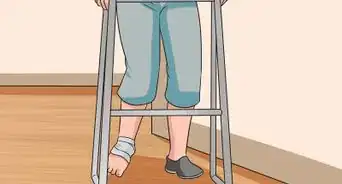
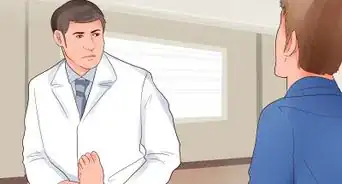
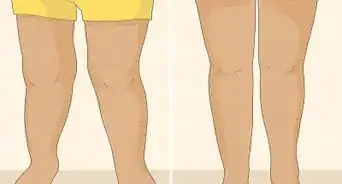
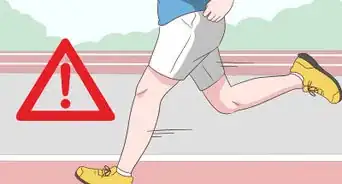

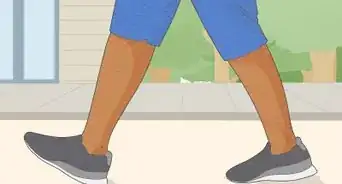
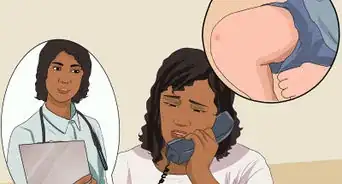
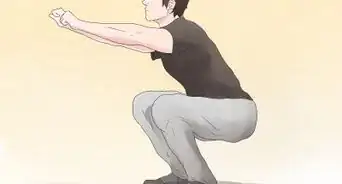

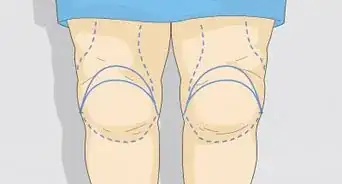
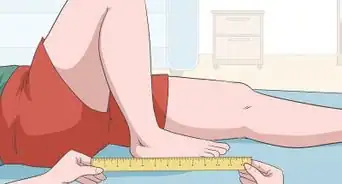
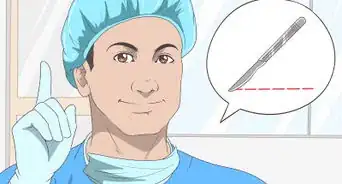








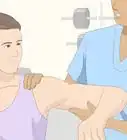
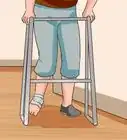
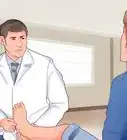
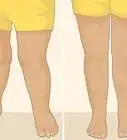



































Medical Disclaimer
The content of this article is not intended to be a substitute for professional medical advice, examination, diagnosis, or treatment. You should always contact your doctor or other qualified healthcare professional before starting, changing, or stopping any kind of health treatment.
Read More...